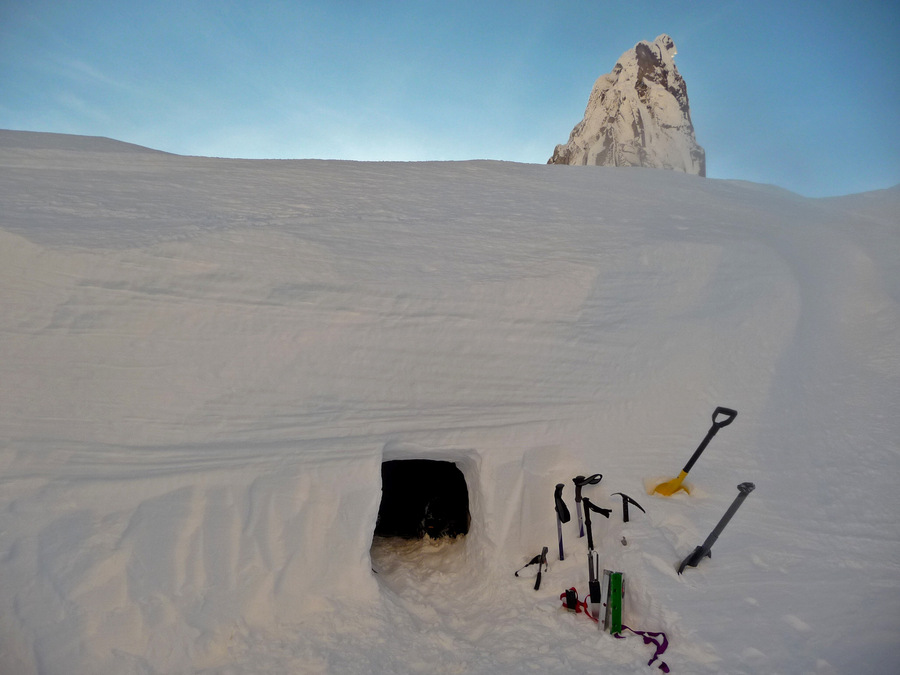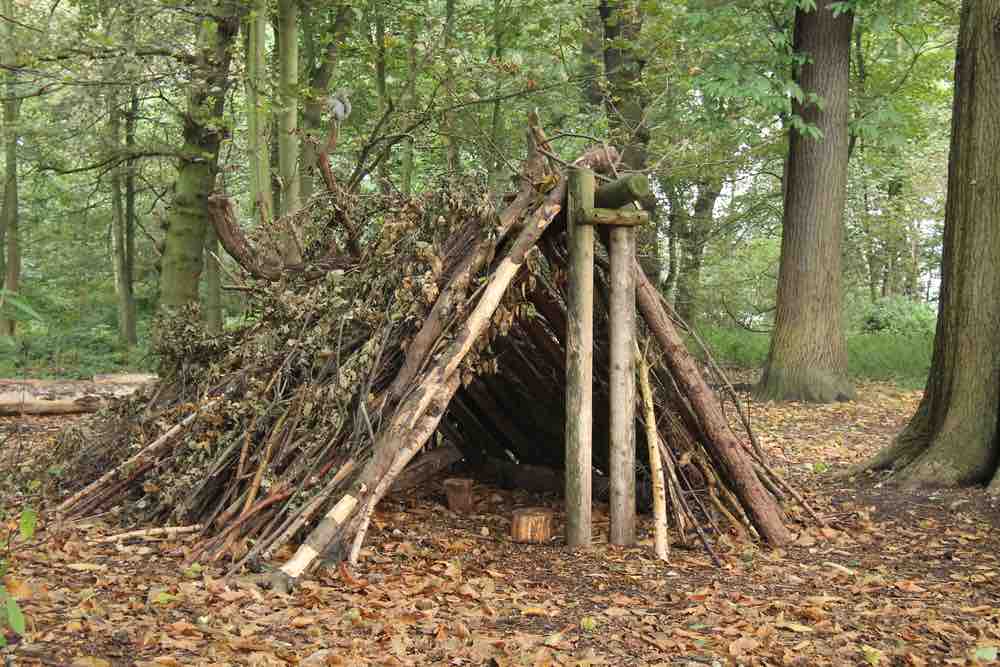Emergency Shelter Tips For Success
When adverse weather strikes, a pleasant day outdoors can quickly turn perilous. Sometimes you may have time to reach your car or find an indoor facility where you can sit out the storm. But what if you’re mountain climbing or miles into the forest? If you can’t reach an indoor shelter, you will need to know how to use the elements to create an outdoor emergency shelter.
These tips will help you use your environment to build an emergency shelter for success, as well as provide best safety practices while sheltering from Mother Nature.
Types Of Emergency Shelters Outdoors
There are a number of different types of emergency shelters that you can make when sheltering outdoors. It will likely depend on the type of environment you find yourself in at the time. You will need to take advantage of the world around you to keep strong winds, rain, snow, hail, and more out of your shelter.
Nest
A nest, or “Eagle’s Nest” outdoor shelter, is a type of debris fort. The goal is to gather a pile of debris and then surround it with walls of rock and stone. If the ground is soft, you can lodge the sticks in the ground for security. Once this is finished and you have a small opening away from the wind where you can enter and exit, you gather more debris that you can wrap around yourself while you sleep. For this kind of shelter, smaller is better as it will take less time and curling up will help you to hold heat in your body.
Snow Cave

A snow cave is a savvy emergency shelter option if you are out skiing or mountain climbing when a storm strikes. For a snow cave, find a large snow drift that runs deep with consistent, packable snow. Begin digging in the shape of a bell, low and narrow and then higher and wider. Digging upward helps to trap heat inside so you can stay warm while you sleep.
Lean-To

A lean-to shelter is a popular outdoor shelter if you find yourself stuck in the woods during fair weather. The lean-to begins with a pole that runs across two nearby trees. From there, build a wall at a 45 degree angle out of saplings, vines, and other cuttings. This will need to be weaved together and layered in order to keep out wind and water. If you have a tarp, this can also help to keep the weather out. On the other side, build yourself a bed of soft debris in between the waterproofing and the trees.
Tree Pit or Fallen Tree

A tree pit is similar to a snow cave in that it involves digging through a dense snow drift to make a shelter. In the case of a tree pit, however, you dig down, typically underneath the shelter of a fallen fir tree. Burrow down to the ground and pack the snow so that it remains sturdy and unlikely to collapse on you. Even if there is no fallen tree, you may be able to find low hanging fir boughs that can help to shelter you for the night.
A-Frame Hut

An A-frame hut builds on the concept of a lean-to. Instead of one leaning wall, it has two, which helps to more thoroughly protect you from wind and rain. Like a lean-to, an A-frame hut is still balanced along a nearby tree. Branches are used to build the walls, and are often reinforced by a tarp.
Safety Tips When Sleeping In an Emergency Shelter Outdoors
In addition to having the right emergency outdoor shelter, you’ll want to know the best tips for sleeping safely outdoors. These will help to ensure that disaster doesn’t strike you even after you’ve built your emergency shelter.
- Scout your location carefully. You don’t want to put your emergency outdoor shelter just anywhere. Aim for high ground and an area with plenty of natural materials that you can use in making your shelter. If you’re making a snow cave, you need lots of snow. If you want a lean-to or a nest, you’ll need lots of branches and leaves.
- Choose your shelter based on the elements. You may know how to find the perfect lean-to, but if you can’t find the right conditions for it, you’ll have to make a nest or an a-frame hut. This is why it helps to know how to make multiple different types of emergency shelters.
- Wrap yourself in debris. You’ll want to make a bed out of tree boughs or debris, but you will also want to wrap the debris around yourself. Staying warm is essential in an emergency outdoor shelter.
- Curl up to sleep. Curling your legs up when you sleep can also help to hold heat into your frame, as it will compact your body heat.
What To Avoid
It’s also important to know what you should avoid when building an emergency outdoor shelter. Common mistakes could cost you when you find yourself having to shelter from adverse weather outdoors. Here are a few of our tips:
Building Your Shelter In a Wet Area
The goal of your emergency outdoor shelter is to keep you warm and dry in the midst of adverse weather. Sleeping on wet ground isn’t just uncomfortable. It could potentially be hazardous for your health, especially as the temperature drops in the night.
Building in a Valley or Ravine
When building an emergency outdoor shelter, you always want to search for high ground. There are a few reasons for this. The first is that heat rises, so you’re more likely to stay warm. When you build a shelter in a low valley, cold will collect and make it difficult to warm yourself. The second is that building your shelter in a valley or ravine makes you vulnerable to flooding or snow storms.
Failing To Insulate the Ground
Never sleep on the bare ground. If you don’t have a sleeping bag, make sure that you insulate the ground with debris or form a bough bed in order to warm yourself. This will make sleeping more comfortable, but also warmer.
How To Stay Warm In Your Shelter
Being stuck out in the elements might be a challenge, but finding yourself stuck in the elements as the night grows colder is the real hassle. Follow these tips in order to stay warm in your shelter through the night:
Burn a Long Burning Fire
Do not start a fire within your shelter, for safety reasons. Instead, start the fire outside your shelter at a safe distance. You need a fire that is likely to burn throughout the night. Find two large logs, as well as a couple large sticks with dents cut into the center. By placing the sticks on either end of the first log, you can balance the second log on top.
Fill the gap between the two logs with branches, leaves, and other tinder. The wetter the log, the more tinder you’ll need. You can even pack dirt in between the logs to slow down the burn and keep the fire going longer. As the fire grows, it will eventually catch onto the large logs, which will prevent the need to constantly replace the tinder.
Build a Bed From Debris
You can find fallen tree boughs — especially fir boughs, leaves and other saplings with which to make a bed for the night. This will insulate the ground and give you something softer to sleep on while you shelter. Getting the right amount of sleep in the evening will help you stay sharp and alert, so this is important, as well.
Bring a Survival Blanket Just In Case
You may find yourself having to rely wholly on the elements, but if you can, it’s always better to be prepared. A poncho liner can keep you protected through the night and tends to be lighter and easier to carry around with you than a sleeping bag.
Point the Opening of Your Shelter Towards the Sun
You should have a small opening in your shelter where you can exit and let in the fresh air in the morning. If your opening is pointed towards the sun, you’ll also be able to receive some warmth from the sunlight in your shelter.
Need more survival tips for your outdoor excursions? Army Navy Outdoors has you covered with the survival-gear and the know-how you need to stay safe, no matter what Mother Nature throws at you. Contact us today by calling (904) 725-5000 to learn more or check out our shop.







